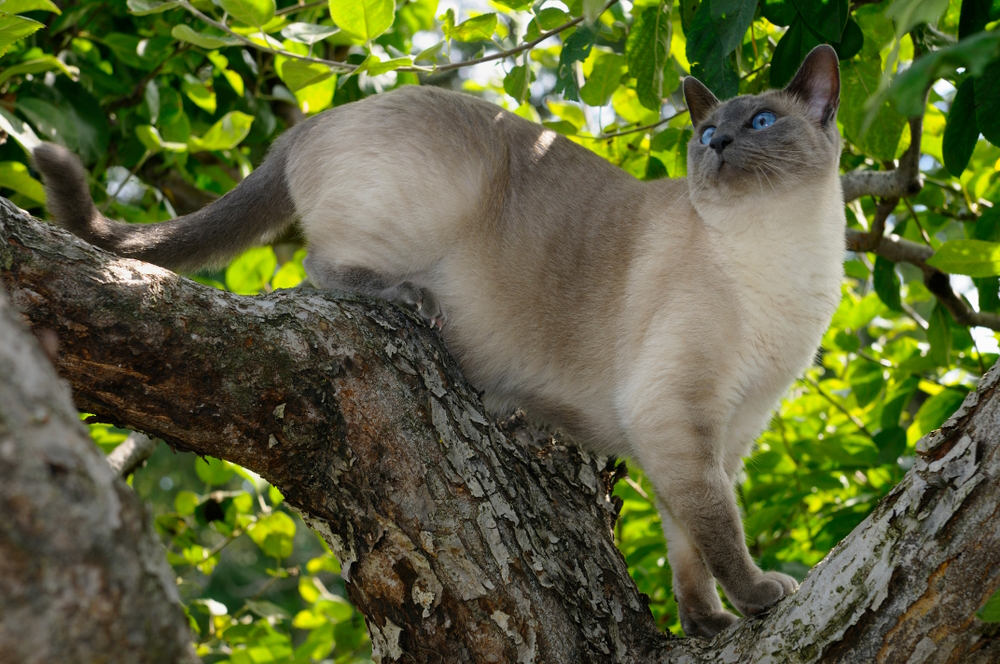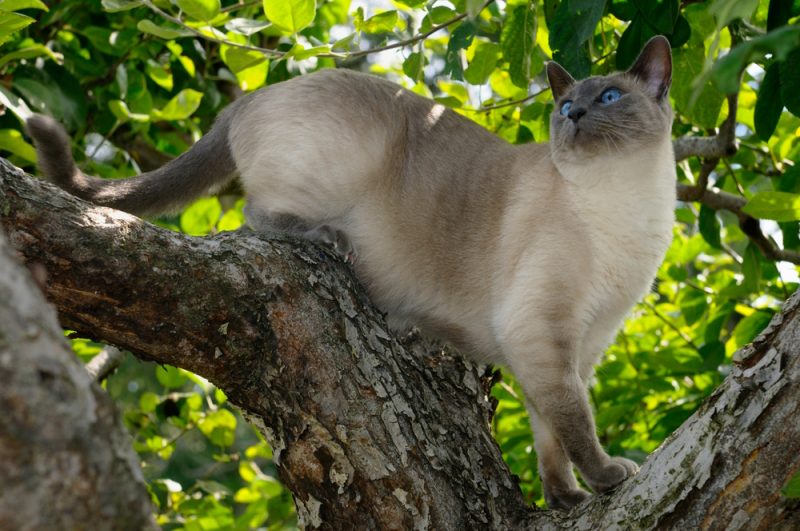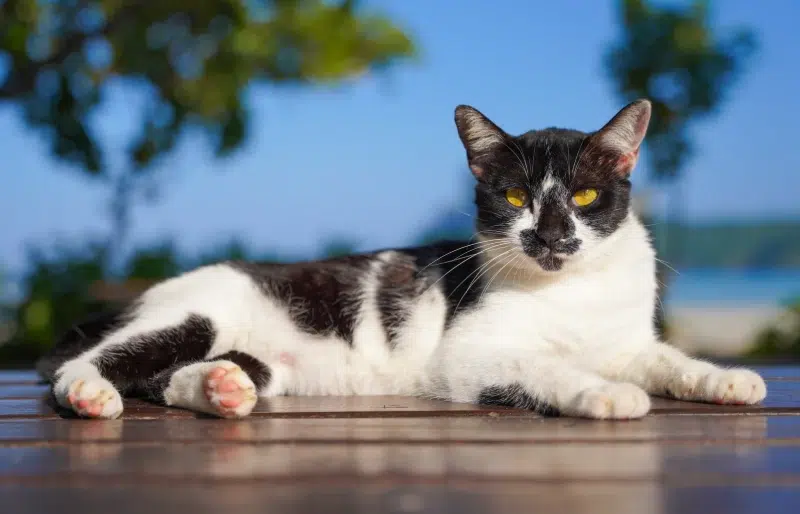Click to Skip Ahead
We’re all likely familiar with Siamese cats, but have you ever wondered if there are personality differences dependent on their coat color? If you’re thinking about adding this breed to your family and are curious about the stunning Blue Point Siamese, we have information that just might interest you!
Breed Overview
Height:
10–12 inches
Weight:
5–12 pounds
Lifespan:
10+ years
Colors:
Bluish-white body with darker slate-blue points
Suitable for:
Families or singles looking for an outgoing and vocal cat
Temperament:
Intelligent, devoted, affectionate, chatty, friendly, playful
Siamese cats typically have cream or fair bodies with darker ears, paws, tails, and facial masks. The most popular color for this breed is seal point, which has dark brown, almost black, points. Blue Point Siamese are virtually identical to other Siamese cats but tend to have pale, cool-toned, bluish-white bodies with deeper slate-gray bluish points.
Blue Point Siamese Characteristics
The Earliest Records of Siamese Cats in History
The Siamese cat is most certainly an ancient breed. However, their origins are shrouded in mystery (i.e., lost). They originated in ancient Siam (hence the name), which is known today as Thailand. It’s unknown exactly when Siamese cats were bred, but it’s believed they were depicted in a Thai manuscript entitled “Tamra Maew,” which translates to “The Cat Book of Poems.” This wasn’t so much a book as an illustrated scroll created between 1350 and 1767 during the Ayutthaya period. It is also believed that the first Siamese cats were descendants of the sacred temple cats in Siam.
They were held in high esteem by royal families, mainly because it was believed that when a family member died, their soul would enter the body of a Siamese cat. The first Siamese cats to make their way outside of Thailand and into the Western parts of the world did so in the 1870s.
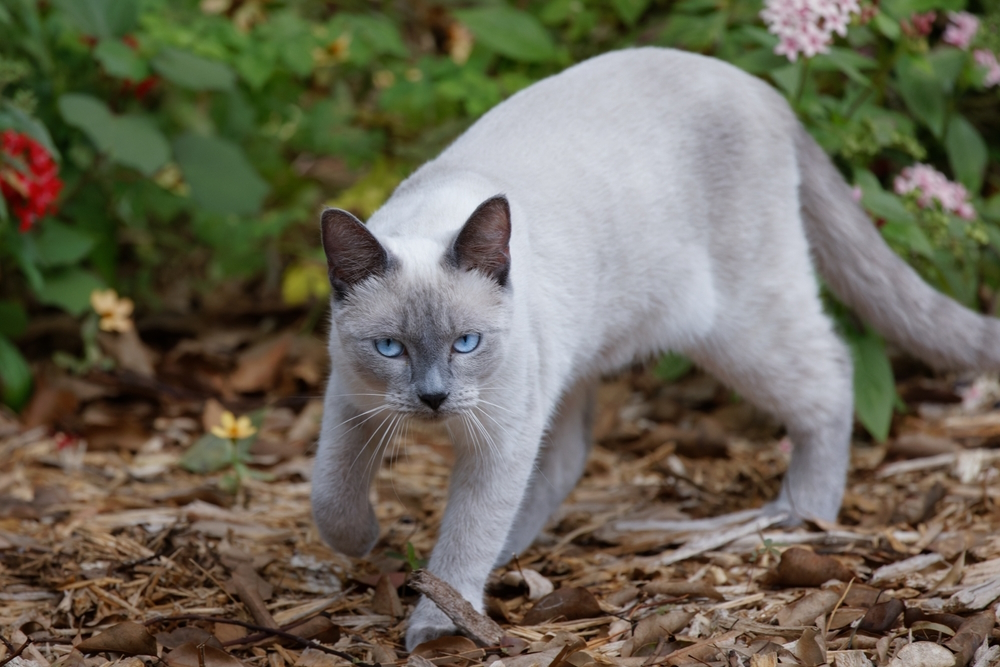
How Siamese Cats Gained Popularity
Sometime in the 1870s, the American diplomat stationed in Bangkok presented a Siamese cat as a gift to Lucy Hayes, the wife of U.S. President Rutherford B. Hayes. She named the cat Siam, and the popularity of this Thai breed took off!
The breed’s popularity was further amplified when many celebrities from that era, including Elizabeth Taylor, Jane Fonda, Clark Gable, and Clint Eastwood, became owners of these stunning cats.
Formal Recognition of the Blue Point Siamese Cat
The Siamese cat was formally recognized by The Cat Fanciers’ Association (CFA) in 1906 and is among the original breeds of pedigreed cats. The CFA recognized the Blue Point Siamese in 1934, followed by the Chocolate Point and in 1955, the Lilac Point.
The other major cat association is The International Cat Association (TICA), which formally recognized the Siamese in 1979. While this might seem late compared to the CFA, TICA itself was actually founded in 1979, and the Siamese cat was among the original breeds.
Top 5 Unique Facts About Blue Point Siamese Cats
1. The Siamese can be found in roughly eight different colors and various patterns, such as tortie.
However, there are only four recognized colors, according to the CFA, and the blue point is one of these. The other three recognized colors are seal, chocolate, and lilac point.
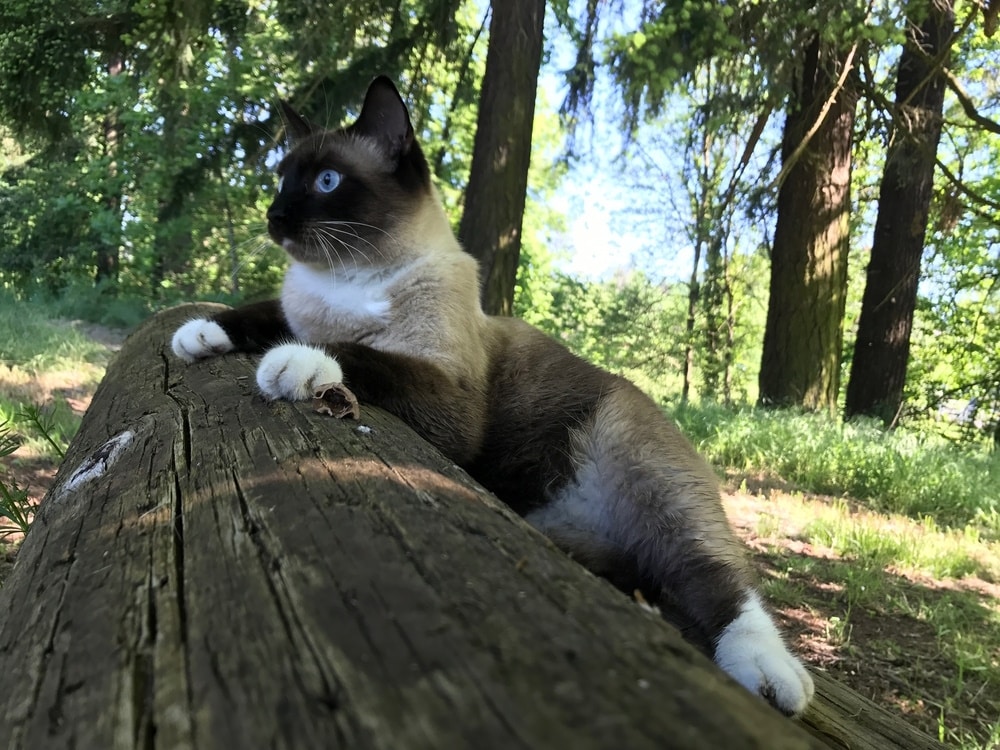
2. When Siamese kittens are born, they are white or cream in color.
Their color points start to develop and darken as they mature, usually as early as 1 week old.
3. Siamese cats have a particular enzyme mutation that is activated only under 91°F (33°C).
This enzyme is not activated until after birth because of the high temperature in the mother’s womb. However, once the kittens are born and their body temperature reduces, the enzyme is stimulated, and this results in the development of their characteristic points.
4. Siamese cats have gained fame not only from celebrity owners but also from being featured in classic films.
They’ve been in movies like “Lady and the Tramp,“That Darn Cat,” “The Incredible Journey,” and “Bell Book, and Candle.” Additionally, Siamese cats were responsible for Dorothy missing the balloon at the end of “The Wizard of Oz.”
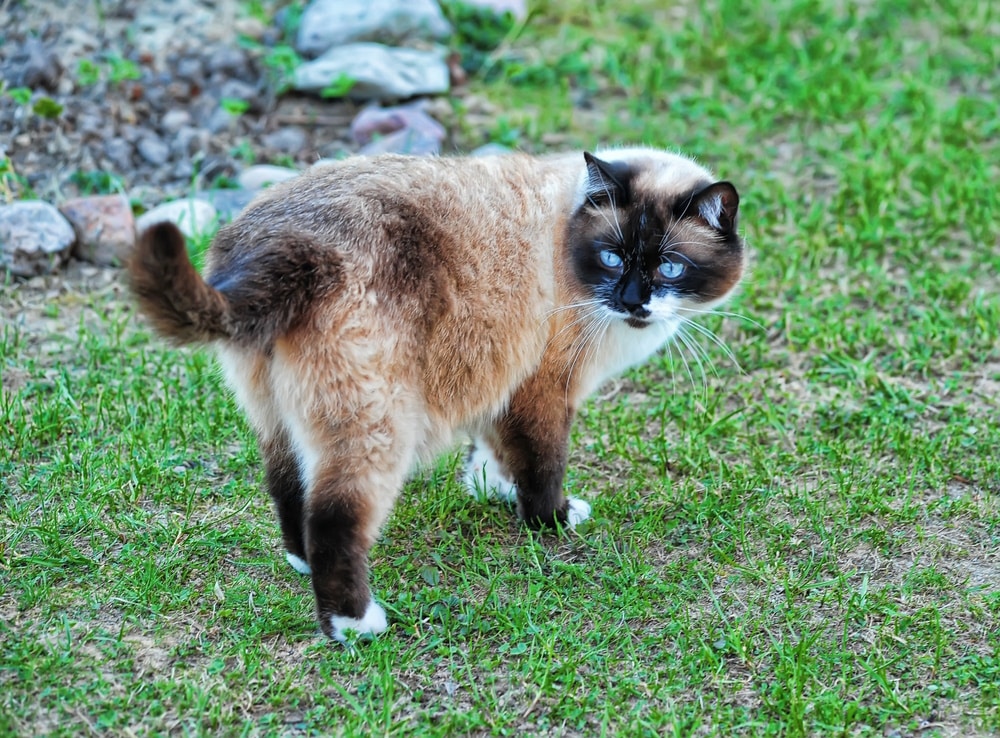
5. Siamese cats have frequently been used in the breeding game to establish new, unique breeds.
These include the Burmese, Himalayan, Tonkinese, Bengal, Havana Brown, Ocicat, and Oriental Shorthair and Longhair. You can usually tell when a cat has Siamese in their background by the lengthy conversations that they all seem to enjoy!
Does the Blue Point Siamese Make a Good Pet?
Absolutely! Since the Blue Point Siamese is the same as the Siamese cat in everything except color, you can expect the same level of care and temperament. They are known for being friendly and social cats that are loyal and affectionate with their loved ones. They are also quite energetic and playful, and they will make excellent playmates for your children. They can get along well with other pets and just about anyone.
However, Siamese cats tend to be demanding. They are prone to separation anxiety, so they are best for households where someone is home much of the time. They’re also famous for their chattiness, so this is something that you need to be prepared for.
Siamese cats don’t need much grooming beyond the occasional brushing to help reduce shedding and trimming the claws when necessary. They get their exercise through play, but this breed can also do well walking on a harness. They are intelligent enough to learn a few tricks too.
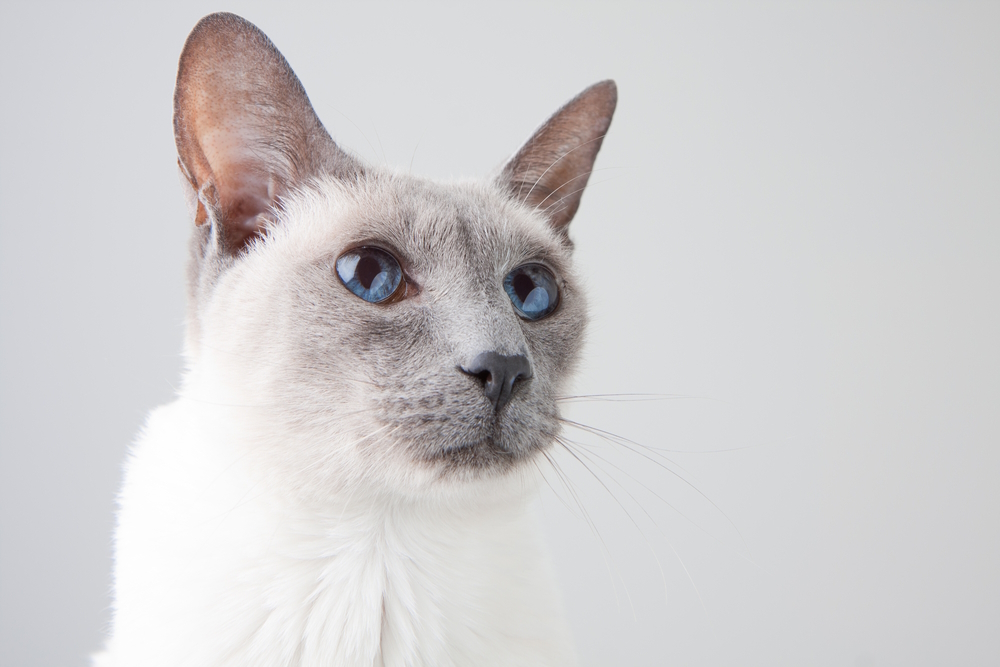
Conclusion
Siamese cats are lovely both in appearance and temperament, but they aren’t for everyone. You must be able to handle their clinginess and never-ending talking.
Blue Point Siamese is more unique in appearance than the Seal Point that we typically see. But they are just as sweet, outgoing, and vocal as any other Siamese.
The Blue Point Siamese is rarer than the Seal Point, so they might be harder to find, but they make excellent pets and are worth the search.
Featured Image Credit: Reimar, Shutterstock

